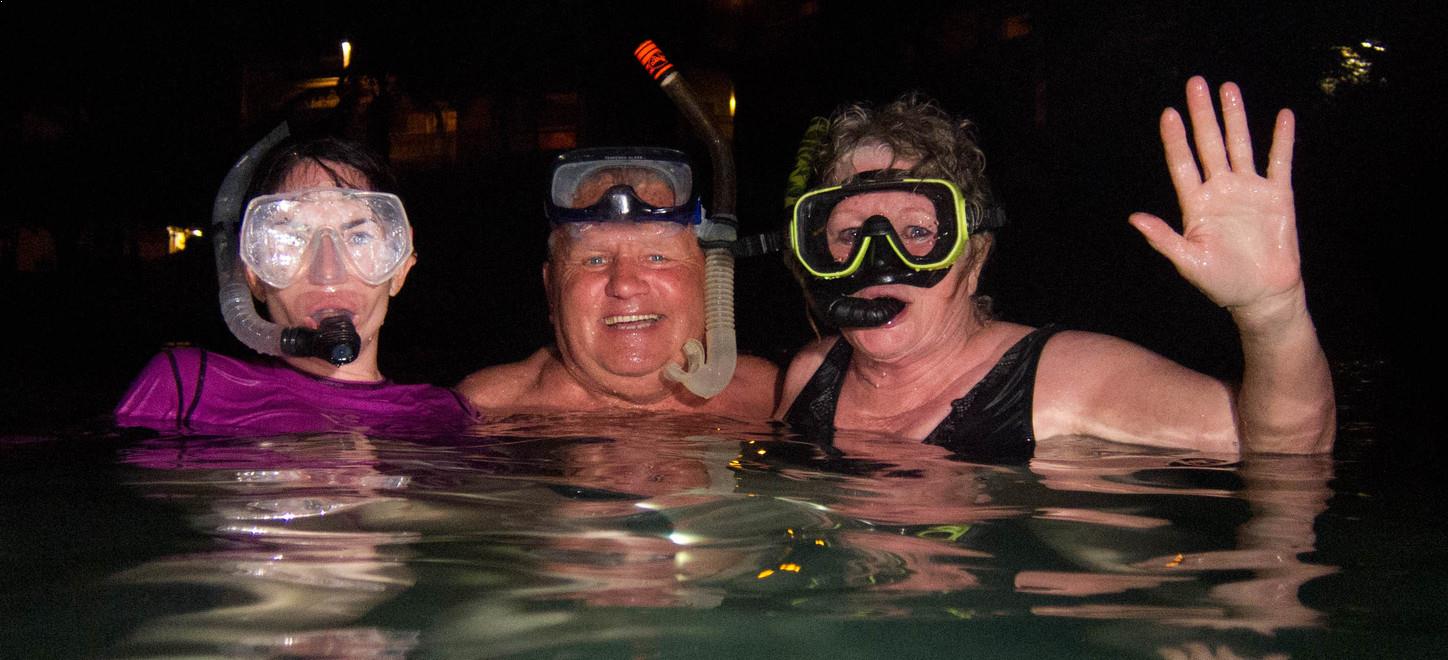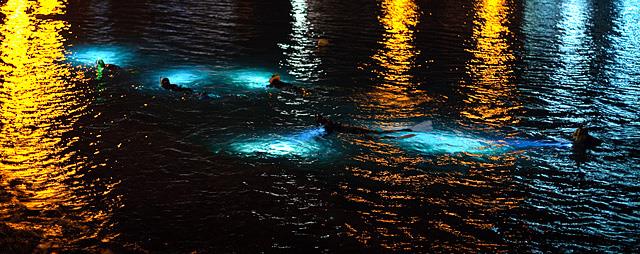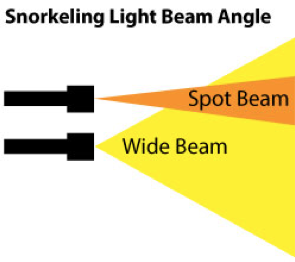
Snorkeling at Night is a Fantastic Experience!
Plan Ahead & See New Creatures
Just the thought of snorkeling at night used to make us a bit nervous. But after doing it a few times we can honestly say that we really enjoy it. Some of the things you get to see are so amazing. Admittedly, we are always a bit unnerved,swimming around in the dark in the water, but that greatly adds to the thrill and excitement. This page will tell you why we recommend you try it, what you might see, and how to prepare for your adventure.
Why Go Snorkeling At Night?
Unique Creatures & Excitement

The big reason to go snorkeling at night is because you get to see many things that you can't during the day. Plus it is just exciting. Many creatures are out feeding at night that are not around during the day at all. Eels and octopus, lobsters and shrimp are all much more active at night. While you may see a Spotted Spiny Lobster during the day, you almost never see a Slipper Lobster, or a Spanish Lobster like the one in the bad picture at right. And some shrimps eyes are brightly reflective, and you can see hundreds of them peering out at you from the reef or rocks.

Corals can be magnificent at night. Most of the time they are closed up during the day, and hardly resemble something alive. But at night they can transform into living animals, blooming out in stunning colors, feeding with their little tentacle bodies, like the Orange Cup Coral below. At night you may also see corals spawning, with a cloud-like release of eggs and sperm.

Look Around The Edges

When you are out snorkeling around in the dark it is easy to get focused on the little stuff right in front of you. But if you regularly pan your light around, looking out into deeper waters and farther away, you may catch sight of an Eagle Ray, or something else big, playing around the edges of your light. And don't forget to sweep your light across a seemingly boring sandy area, where you might find an octopus ranging around on the hunt. They also love to hide in the ends of pipes, and other natural holes.


Turn Off Your Light For A Magical Surprise
While it is very cool to see the creatures you can find with your light, you may be in for a wonderful surprise if you turn your light off. If you are in luck there will be phosphorescent plankton present, which will emit it's own light. Move your arms and legs quickly through the water and watch hundreds of little balls of light suddenly appear. Sometimes if it is in abundance you can see streams of light from fish swimming by.
The Best Places To Night Snorkel
Because snorkeling at night can be a bit unnerving, we prefer to do it in places where there is some light coming from shore, from street lights, or hotel lights. It gives a sense of direction and a little peace. Moonlight can be nice also. We also like places that have a bit of rock rubble or coral, because lobsters and shrimp like to hang out around those. And as mentioned above, blooming coral can be beautiful. We also like to pick places that we have snorkeled in the day, so that we are familiar with the area. And we like to pick places that are very calm, or naturally protected from waves and surge. Because rough water is not something you wantto experience in the dark. Finally, pick a place where you can easily find your exit. It should have a light on the beach, or something you can see. You don't want to get lost.
Special Opportunities

There are a few unique night snorkeling opportunities around the world that go beyond the normal. One example is snorkeling at night with Manta Rays on the Big Island of Hawaii. Imagine thirty of these huge creatures with wing spans of eight to sixteen feet, doing donut turns right in front of your face. Incredible!
Get A Guided Tour Your First Time
One of the best ways to do your first night snorkel is to sign up for a guided trip. These can happen from beaches or boats. The great thing about a guided tour is that they will generally provide your lights, and will know just what to look for, pointing out where the different creatures are hiding, that you might normally miss. It is the best way to get used to snorkeling at night before venturing off on your own
Always Go With A Buddy
We always recommend you snorkel with a friend. But we doubly recommend it for snorkeling at night. Two lights are better than one, particularly when your batteries die.
Renting vs. Buying Waterproof Flashlights
A waterproof flashlight that is made for snorkeling or diving is essential. Renting is a great way to start out. Generally for eight to fifteen dollars, you can rent a light from a dive shop for a night. It is a good way to try out different lights, and it saves you having to pack it in your luggage. But if you find you like snorkeling at night, then owning good lights will be more economical in the long run. And you will have the peace of mind of knowing they have fresh good batteries. Make sure and read our night snorkeling light buying guide .
Wear A Neoprene Top For Warmth
Besides the lights, the only gear change we make for snorkeling at night is to wear a thin 1mm neoprene top, instead of our thin rash guards. The added warmth isvery comforting.
Night Snorkeling Photography Tips
While I am no expert at this, here are a few tips I have learned:
-
I have found that I need to set my camera to ISO 1600 or higher to get pictures that are sharp. You may need to set yours even higher if you have a slower lens than the F2.0 on mine.
-
Putting your flashlight beam directly on the creature you are trying to take a picture of will generally lead to pictures with a big splotch of bright white. Instead, shine your light just off to the side, letting the reflected light illuminate your subject. If you have a snorkeling partner, have them direct their light to the other side.
Although it seems like a flash would be a good idea, it will illuminate all the particles in the water right in front of your lens (backscatter), obscuring your subject. I leave the flash off and use my hand held light. If you hold it as far away from your camera as you can it will reduce backscatter. There are special lighting systems for underwater cameras, but I like to keep it simple and lightweight.




















 Snorkel at night
Snorkel at night 







